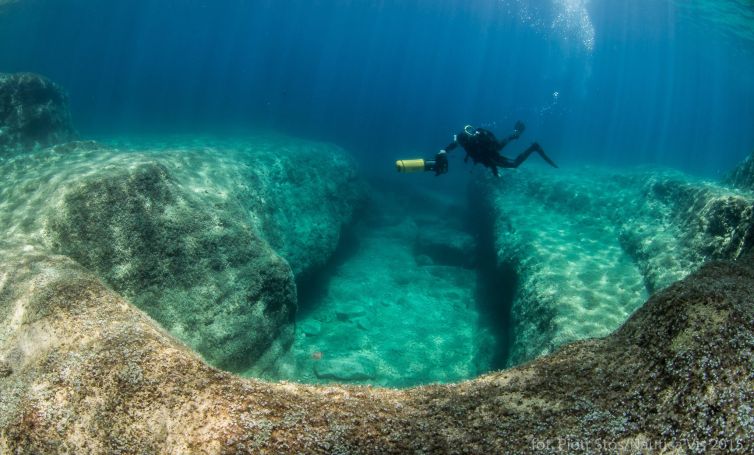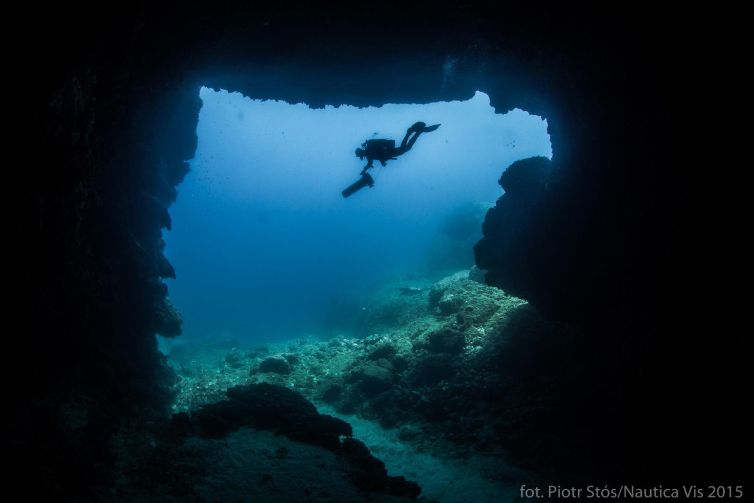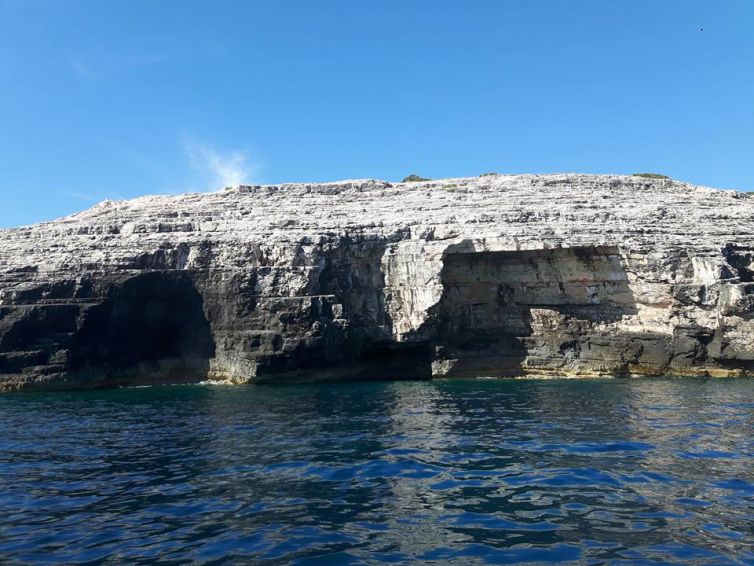Dive Sites
Bili Bok

dive site type: caves & caverns
difficulty: medium
depth range: 0-20 m
distance from the diving center: 8 nm
short characteristic: located close to Rukavac and accessible by boat and car diving site consists of a system of 6 caverns, which differ in shapes and sizes, but all are covered by colourful sponges and inhabited by various nocturnal animals
On the south of the island, near the village of Rukavac – the third largest port on Vis – there is the biggest nudist beach on the island. Built of white, almost flat limestones, creating gradual forms resembling shelves what gives a lot of privacy and places the beach on top of the list of the most favourite places of tourists. The name of the beach Bili Bok means the white shore and refers to the fact that during the full moon light rocks so reflect the light intensely that the entire peninsula is almost as bright as in the day. This place is also worth visiting during the day, when the weather is not favorable for sunbathing and jugo – a strong wind from the southern direction is blowing. Than the height of the waves hitting Bili Bok peninsula exceed even 7 m.
Despite the numerous advantages of the emerged part, the most beautiful fragments of Bili Bok are hidden under water, and the proximity of the popular beach gives divers the opportunity to do diving in this place both from the boat and from the shore. From the surface to the depth of 10 m there is a slowly descending slope, which at the bottom transforms into a vertical wall going down to the depth of 20 m. It is this short wall what is rated as one of the most interesting dive sites on Vis. At the distance, which takes about 30 minutes of peaceful swimming, there are 5 caverns and one small tunnel. The caverns are of different sizes – those, which are reached in the beginning of diving, require swimming inside one by one, but in the end, in turn, there is a cavern called, due to its size, a cathedral.
As usually when it comes to caves – the majority of life and activity can be found at the border of light and dark. This is where divers can meet numerous crustaceans, here also hunt scorpionfish and moray eels. Inside the caverns divers can see colourful walls and ceilings – very richly covered by various plant and animal organisms. The bottoms, it turn, are made of granular material of sizes of sand and silt. The the darkest places thousands of tiny shrimps can be found on sandy bottom. A very characteristic fish for enclosed spaces is a cardinalfish – a red fish with a large eye. A careful diver can see that the cardinalfish always moves directing the abdominal part of the body to the bedrock, regardless of whether it is the bottom, wall or ceiling, therefore in the caves it can be observed that cardinalfish are swimming belly up. On the ceiling divers can sometimes see their reflections – bubbles released by divers while breathing in some places cannot find an exit and create small airbags, which at a right angle create a mirror-like effect.















